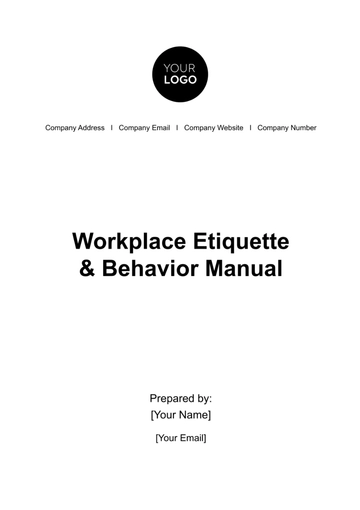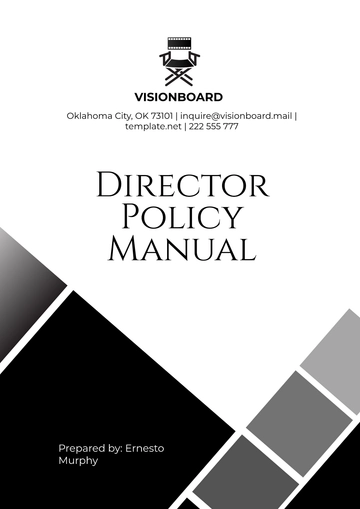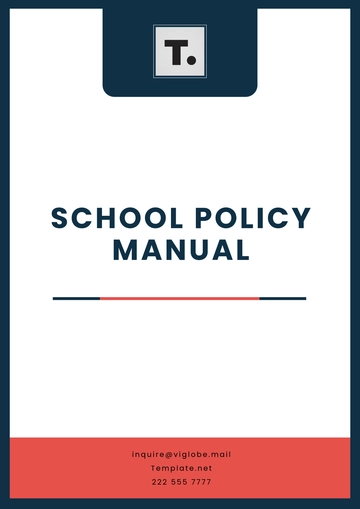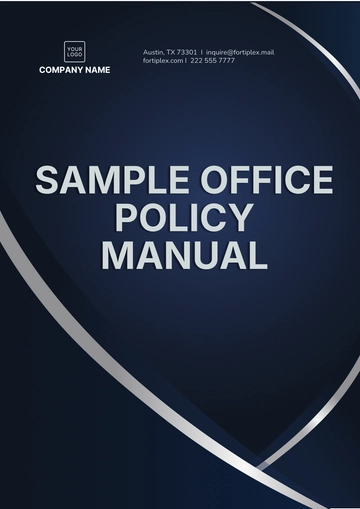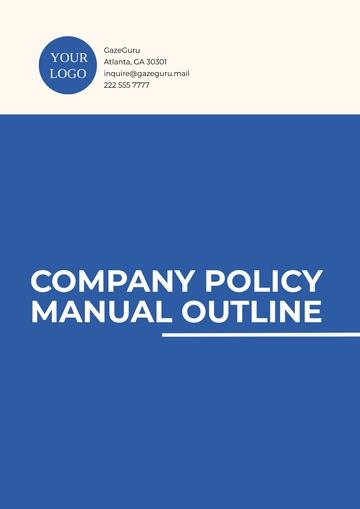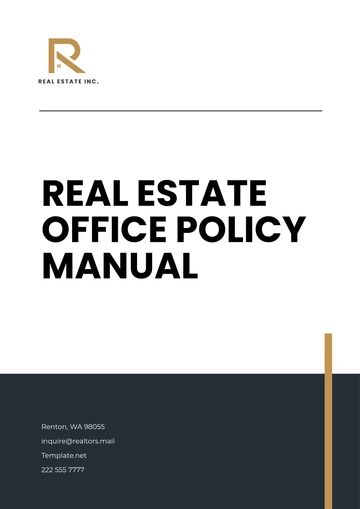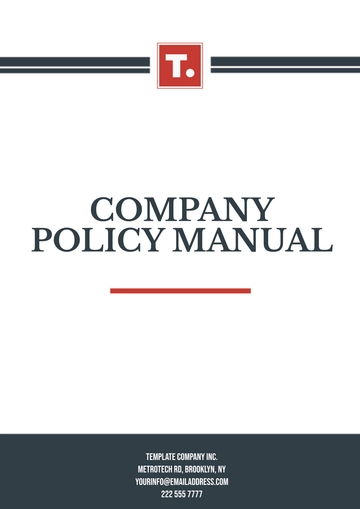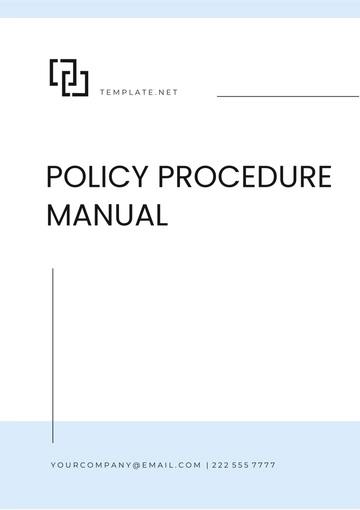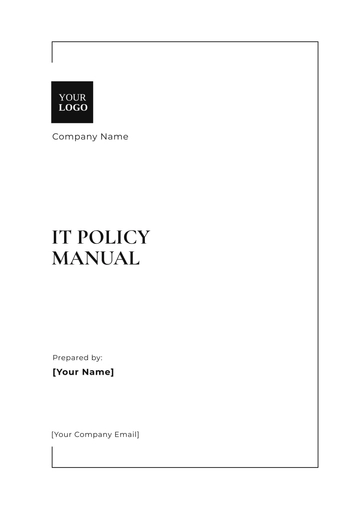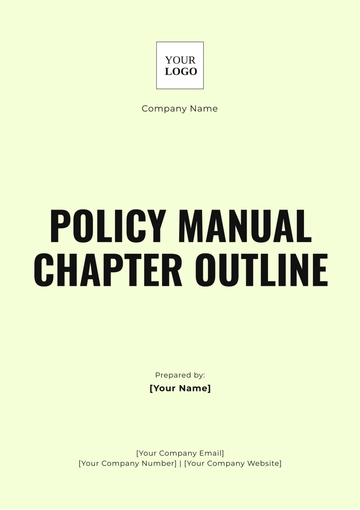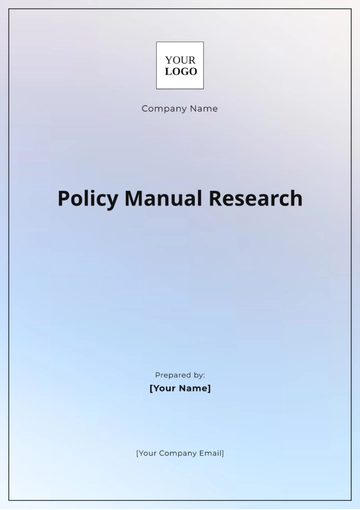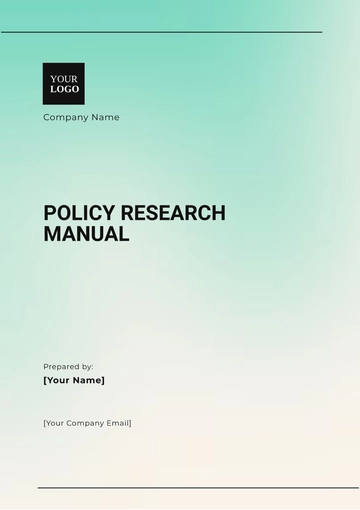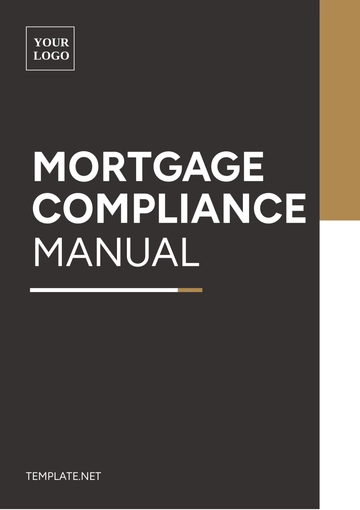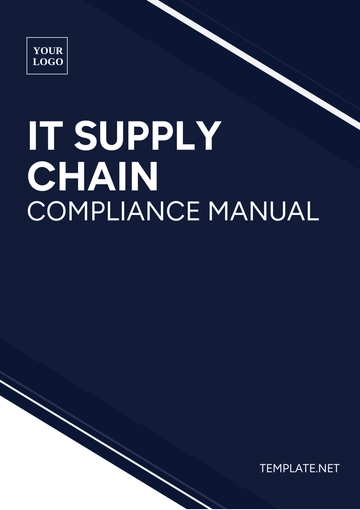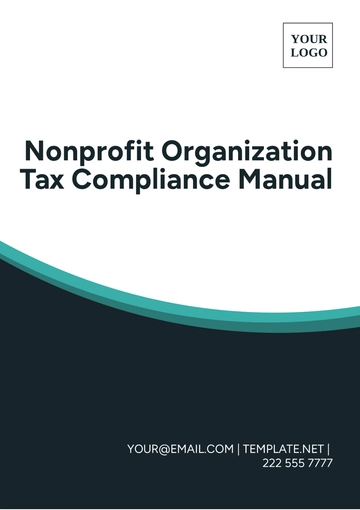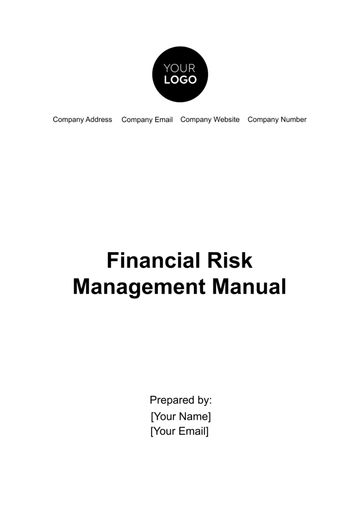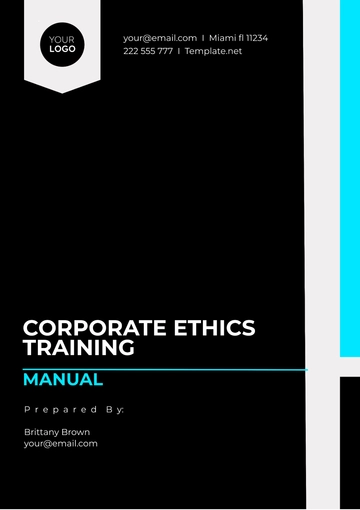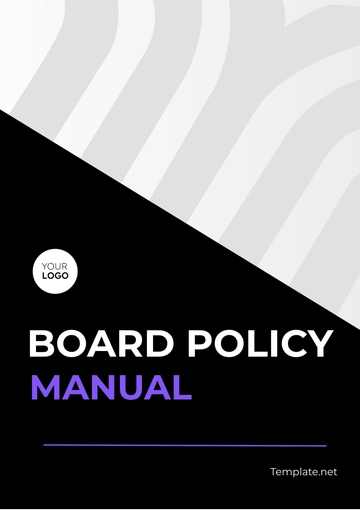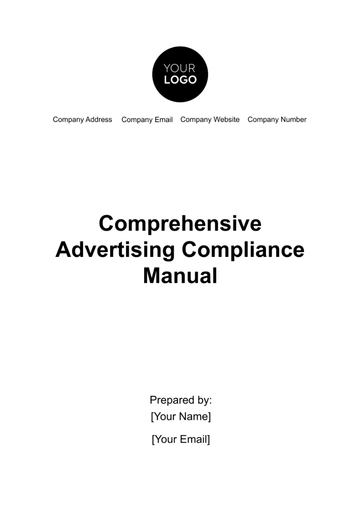Free Legal Intellectual Property Enforcement Strategy Manual
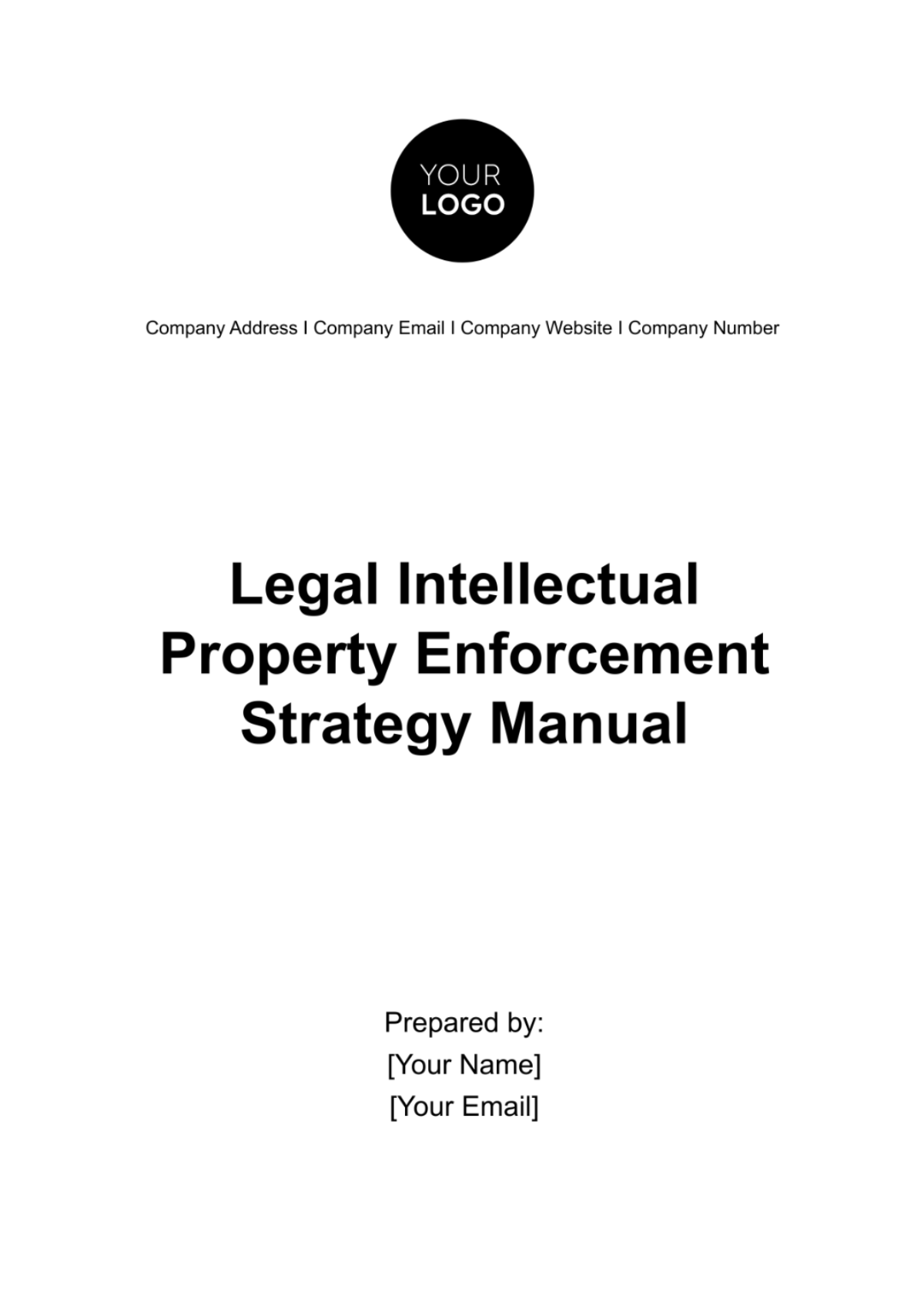
I. Introduction
Welcome to the Legal Intellectual Property Enforcement Strategy Manual of [Your Company Name]. In today's highly competitive business environment, protecting intellectual property (IP) rights is paramount for maintaining a competitive edge and safeguarding valuable assets. This manual serves as a comprehensive guide for identifying, assessing, and enforcing our IP rights effectively.
At [Your Company Name], we recognize the importance of innovation and creativity in driving our success. Our intellectual property, including trademarks, copyrights, patents, and trade secrets, represents the culmination of our hard work, ingenuity, and investment. This manual outlines our commitment to protecting these assets and outlines the strategies we employ to ensure their security and integrity.
II. Identification of IP Assets
Effective IP enforcement begins with a thorough understanding and identification of our intellectual property assets. At [Your Company Name], our IP portfolio includes:
Trademarks: Logos, brand names, slogans, and other identifiers associated with our products and services.
Copyrights: Original creative works such as software code, marketing materials, and website content.
Patents: Innovations, inventions, and processes that provide a competitive advantage in the marketplace.
Trade Secrets: Confidential information, formulas, and techniques that give us a strategic advantage over competitors.
By cataloging and categorizing our IP assets, we can prioritize enforcement efforts and allocate resources effectively.
III. Risk Assessment
Conducting a comprehensive risk assessment is essential for identifying potential threats to our intellectual property. At [Your Company Name], we recognize that understanding and mitigating these risks are vital to safeguarding our valuable assets. Our risk assessment encompasses various factors, including:
Infringement by Competitors:
Unauthorized Use: Competitors may attempt to capitalize on our brand reputation by using our trademarks, logos, or copyrighted materials without permission.
Product Imitation: Competitors may produce goods that closely resemble our products, leading to consumer confusion and dilution of our brand identity.
Patent Infringement: Competitors may infringe on our patented technologies or processes, undermining our competitive advantage in the market.
Counterfeiting:
Production and Distribution: Counterfeiters may produce and distribute fake versions of our products, deceiving consumers and tarnishing our brand reputation.
Quality Control: Counterfeit goods may not meet our quality standards, leading to customer dissatisfaction and potential safety hazards.
Revenue Loss: Counterfeiting undermines our revenue streams by diverting sales away from genuine products and eroding consumer trust in our brand.
Employee Misappropriation:
Unauthorized Disclosure: Employees may disclose trade secrets or confidential information to competitors, compromising our competitive advantage and market position.
Data Breaches: Negligence or malicious intent by employees may result in data breaches, exposing sensitive information and intellectual property to unauthorized access or theft.
Departing Employees: Former employees may take valuable intellectual property with them when leaving the company, posing a risk of misuse or exploitation.
Online Piracy:
Digital Content: Unauthorized distribution of copyrighted materials, such as software, digital media, or proprietary content, through online channels.
E-Commerce Platforms: Third-party sellers may list counterfeit or infringing products on e-commerce platforms, exploiting loopholes in enforcement mechanisms.
Digital Rights Management: Challenges in implementing effective digital rights management (DRM) solutions to prevent unauthorized copying or sharing of digital content.
Supply Chain Vulnerabilities:
Outsourcing Risks: Dependence on third-party suppliers or contractors increases the risk of intellectual property theft or leakage through supply chain vulnerabilities.
Contractual Obligations: Ensuring that suppliers and contractors adhere to contractual obligations regarding the protection and confidentiality of our intellectual property.
Due Diligence: Conducting thorough due diligence assessments to evaluate the security practices and integrity of potential business partners and suppliers.
IV. Enforcement Mechanisms
Enforcing our intellectual property rights requires a multifaceted approach that leverages various mechanisms and strategies tailored to specific circumstances. At [Your Company Name], we are committed to employing effective enforcement measures to protect our valuable assets. Our enforcement mechanisms encompass the following strategies:
Cease and Desist Letters:
Purpose: Cease and desist letters serve as an initial step to notify infringers of their unauthorized use of our intellectual property and demand that they cease such activities immediately.
Content: These letters typically outline the specific infringements, provide evidence of our rights, and request prompt compliance to avoid further legal action.
Effectiveness: Cease and desist letters are often successful in resolving IP disputes amicably without resorting to costly litigation, particularly when sent by legal counsel.
Litigation:
Purpose: Legal action may be necessary when informal measures fail to resolve IP disputes satisfactorily. Litigation enables us to seek judicial remedies, such as injunctions, damages, and attorney's fees, to enforce our rights.
Types of Actions: Civil lawsuits may be filed in federal or state courts to address trademark infringement, copyright infringement, patent infringement, or trade secret misappropriation.
Strategic Considerations: Litigation strategies are developed based on factors such as the strength of our legal claims, the likelihood of success, potential damages, and the cost-benefit analysis of pursuing legal action.
Administrative Complaints:
Purpose: Administrative complaints may be filed with regulatory agencies or industry bodies to address specific IP violations, particularly in cases involving unfair competition, false advertising, or regulatory non-compliance.
Regulatory Oversight: Regulatory bodies such as the U.S. Patent and Trademark Office (USPTO), the International Trade Commission (ITC), or industry-specific regulatory agencies may have jurisdiction over certain IP disputes.
Remedies: Administrative proceedings may result in remedies such as cease and desist orders, monetary penalties, or exclusion orders barring infringing products from the market.
Digital Rights Management (DRM):
Purpose: Digital rights management technologies are employed to prevent unauthorized copying, distribution, or modification of digital content, such as software, multimedia files, or electronic documents.
Technological Solutions: DRM solutions encompass encryption, access controls, watermarking, and authentication mechanisms to protect digital assets from piracy and unauthorized use.
Challenges: Despite advances in DRM technology, challenges remain in balancing copyright protection with consumer privacy, interoperability, and user experience considerations.
Brand Protection Programs:
Purpose: Brand protection programs are designed to monitor and enforce our trademarks, logos, and brand identity against misuse, counterfeiting, or dilution.
Monitoring Strategies: Brand protection efforts may involve proactive monitoring of online and offline channels, including e-commerce platforms, social media, marketplaces, and physical retail locations.
Enforcement Actions: Upon detecting instances of brand misuse or infringement, enforcement actions may include takedown notices, cease and desist letters, litigation, or collaboration with law enforcement authorities.
International Cooperation:
Purpose: Given the global nature of IP infringement, international cooperation and collaboration with foreign authorities, law enforcement agencies, and industry stakeholders are essential for effective enforcement.
Bilateral and Multilateral Agreements: Bilateral and multilateral agreements facilitate information sharing, joint enforcement actions, and capacity-building initiatives to combat cross-border IP infringement.
Interpol and Europol: Interpol's Intellectual Property Crime Action Group (IPCAG) and Europol's Intellectual Property Crime Coordinated Coalition (IPC3) coordinate international efforts to combat IP crime and support law enforcement agencies worldwide.
V. Jurisdictional Considerations
Enforcing intellectual property rights often involves navigating complex legal frameworks across different jurisdictions. At [Your Company Name], we recognize the importance of understanding jurisdictional considerations to effectively protect our intellectual property assets. Our approach encompasses the following key considerations:
International Treaties and Agreements:
Purpose: International treaties and agreements establish harmonized standards for the protection and enforcement of intellectual property rights across multiple jurisdictions.
Key Treaties: Agreements such as the Berne Convention for the Protection of Literary and Artistic Works, the Agreement on Trade-Related Aspects of Intellectual Property Rights (TRIPS), and various WIPO treaties provide a framework for cross-border IP enforcement.
Compliance Requirements: Ensuring compliance with treaty obligations helps to strengthen our IP protection efforts and facilitates international cooperation in combating infringement.
Forum Selection:
Strategic Considerations: Choosing the appropriate forum for enforcing our intellectual property rights involves assessing factors such as legal precedents, enforcement mechanisms, procedural efficiency, and the likelihood of success.
Federal vs. State Courts: In the United States, we may have the option to pursue IP enforcement actions in federal courts or state courts, depending on the nature of the claims and the parties involved.
International Arbitration: Arbitration may offer a faster and more cost-effective alternative to traditional litigation for resolving international IP disputes, particularly when dealing with parties from different jurisdictions.
Local Laws and Regulations:
Legal Landscape: Understanding the nuances of local IP laws and regulations in each jurisdiction where we operate or where infringement occurs is essential for effective enforcement.
Enforcement Mechanisms: Jurisdictions may have different legal mechanisms and procedures for enforcing intellectual property rights, including civil remedies, criminal penalties, administrative proceedings, and alternative dispute resolution mechanisms.
Cultural and Legal Differences: Cultural norms, business practices, and legal traditions vary between jurisdictions, influencing the interpretation and enforcement of intellectual property rights.
Extraterritorial Enforcement:
Cross-Border Challenges: Enforcing IP rights across borders presents challenges such as jurisdictional limitations, conflicting legal standards, language barriers, and differences in enforcement priorities.
Extraterritorial Jurisdiction: Some jurisdictions assert extraterritorial jurisdiction over IP disputes, allowing courts to adjudicate claims involving foreign parties or acts occurring outside their territorial boundaries under certain circumstances.
International Cooperation: Collaboration with foreign authorities, law enforcement agencies, and legal counsel is critical for navigating the complexities of extraterritorial enforcement and maximizing the effectiveness of our enforcement efforts.
Enforcement Strategies:
Regional Focus: Tailoring enforcement strategies to the specific legal and regulatory environment of each region or jurisdiction where we encounter IP infringement ensures that our actions are aligned with local laws and practices.
Parallel Proceedings: Coordinating parallel enforcement proceedings in multiple jurisdictions may be necessary to address cross-border infringement effectively while optimizing resources and minimizing legal risks.
Strategic Litigation: Strategic litigation may involve strategically selecting jurisdictions with favorable legal precedents or enforcement mechanisms to maximize the likelihood of success and deterrence.
VI. Preventive Measures
Prevention is key to minimizing the risk of IP infringement and protecting our valuable assets. We implement various preventive measures, including:
Employee Training: Educating employees about the importance of IP protection and their responsibilities in safeguarding confidential information and trade secrets.
Non-Disclosure Agreements (NDAs): Requiring employees, partners, and contractors to sign NDAs to protect sensitive information.
Secure Data Management: Implementing robust data security measures to prevent unauthorized access or disclosure of confidential information.
Intellectual Property Audits: Conducting regular audits to assess the security and integrity of our IP assets and identify potential vulnerabilities.
Brand Monitoring: Utilizing online monitoring tools and services to detect and respond to instances of brand misuse or infringement.
By proactively addressing potential risks and vulnerabilities, we can strengthen our IP protection efforts and minimize the likelihood of infringement.
VII. Partnerships and Collaborations
Collaboration with industry partners, government agencies, and law enforcement is essential for enhancing our IP enforcement capabilities. We engage in partnerships and collaborations to:
Share Information and Best Practices: Collaborating with industry associations and peer organizations to exchange information and best practices for combating IP infringement.
Coordinate Enforcement Efforts: Partnering with law enforcement agencies and regulatory bodies to coordinate enforcement actions and combat counterfeit goods and piracy.
Advocate for Policy Reform: Working with policymakers and legislators to advocate for stronger IP protection laws and enforcement mechanisms at the local, national, and international levels.
By working together with stakeholders across the ecosystem, we can amplify our enforcement efforts and achieve greater impact in protecting our intellectual property rights.
VIII. Cost-Benefit Analysis
Conducting a thorough cost-benefit analysis is essential for optimizing resource allocation and maximizing the effectiveness of our intellectual property enforcement efforts. At [Your Company Name], we recognize the importance of evaluating the potential costs and benefits associated with enforcing our IP rights. Our approach to cost-benefit analysis encompasses the following key considerations:
Enforcement Costs:
Legal Fees: Assessing the direct costs associated with legal representation, litigation, administrative proceedings, and other legal services required for enforcing our IP rights.
Investigation Expenses: Budgeting for expenses related to conducting investigations, gathering evidence, hiring investigators or forensic experts, and other activities necessary for identifying and documenting infringement.
Administrative Costs: Accounting for administrative expenses such as filing fees, court costs, travel expenses, and other overhead costs associated with IP enforcement activities.
Potential Damages:
Revenue Loss: Estimating the potential revenue loss resulting from IP infringement, including lost sales, market share erosion, price erosion, and other direct financial impacts on our business.
Brand Damage: Quantifying the potential damage to our brand reputation, goodwill, consumer trust, and market value resulting from counterfeit goods, product quality issues, or negative publicity associated with infringement.
Reputational Harm: Evaluating the long-term impact on our brand equity, customer loyalty, and competitive positioning in the market due to infringement-related controversies or legal disputes.
Long-Term Impact:
Strategic Considerations: Considering the strategic importance of enforcing our IP rights in terms of protecting core products, maintaining market differentiation, preserving brand integrity, and sustaining long-term profitability.
Market Dynamics: Analyzing market dynamics, competitive pressures, industry trends, and consumer preferences to assess the potential impact of IP enforcement actions on our market share, pricing strategy, and revenue growth.
Opportunity Costs: Factoring in the opportunity costs associated with allocating resources to IP enforcement activities rather than alternative uses such as research and development, marketing, or expansion into new markets.
Return on Investment (ROI):
Quantitative Analysis: Calculating the expected ROI of IP enforcement efforts by comparing the projected benefits (e.g., avoided losses, recovered damages, deterrence effects) to the total costs incurred (e.g., enforcement costs, legal fees, investigative expenses).
Qualitative Factors: Considering qualitative factors such as brand equity, competitive positioning, market share stability, and regulatory compliance when assessing the overall impact and value proposition of IP enforcement activities.
Risk Management: Factoring in risk mitigation benefits, such as reducing legal exposure, minimizing regulatory compliance risks, mitigating reputational damage, and protecting our market share from competitive threats.
Strategic Prioritization:
Risk-Adjusted Returns: Prioritizing enforcement actions based on the expected risk-adjusted returns, focusing resources on high-impact cases with the potential for significant damages, deterrence effects, or strategic benefits.
Cost-Effectiveness: Identifying cost-effective enforcement strategies that maximize the ROI by balancing the expected benefits against the associated costs and risks, considering factors such as enforcement efficiency, scalability, and sustainability.
Portfolio Management: Managing our IP portfolio strategically by prioritizing protection for core assets, high-value innovations, key brands, and emerging technologies while rationalizing investment in lower-priority or obsolete IP assets.
The table below provides a more specific breakdown of the costs and benefits associated with intellectual property enforcement efforts, with actual figures provided for legal fees, investigation expenses, administrative costs, and the corresponding benefits such as revenue loss mitigation, brand damage prevention, and reputational harm mitigation.
Costs | Amount | Benefits | Amount |
|---|---|---|---|
Legal Fees | $25,000 | Revenue Loss | $150,000 |
Investigation Expenses | $10,000 | Brand Damage | $100,000 |
Administrative Costs | $5,000 | Reputational Harm | $75,000 |
Total Costs | $40,000 | Total Benefits | $325,000 |
Net Benefit | $285,000 |
IX. Conclusion
In conclusion, protecting intellectual property rights is a critical priority for [Your Company Name]. This Legal Intellectual Property Enforcement Strategy Manual provides a roadmap for identifying, assessing, and enforcing our IP rights effectively. By implementing proactive enforcement strategies, collaborating with stakeholders, and conducting cost-benefit analysis, we can safeguard our valuable assets and maintain our competitive edge in the marketplace. Together, we can ensure that our intellectual property remains protected and respected, now and in the future.
- 100% Customizable, free editor
- Access 1 Million+ Templates, photo’s & graphics
- Download or share as a template
- Click and replace photos, graphics, text, backgrounds
- Resize, crop, AI write & more
- Access advanced editor
Safeguard your innovations with Template.net's Legal Intellectual Property Enforcement Strategy Manual Template. This editable template, accessible through our AI Editor Tool, streamlines enforcement procedures. Featuring customizable fields and structured formats, it empowers you to outline enforcement strategies and tactics, facilitating proactive measures to deter IP violations and protect your valuable intellectual property rights.


